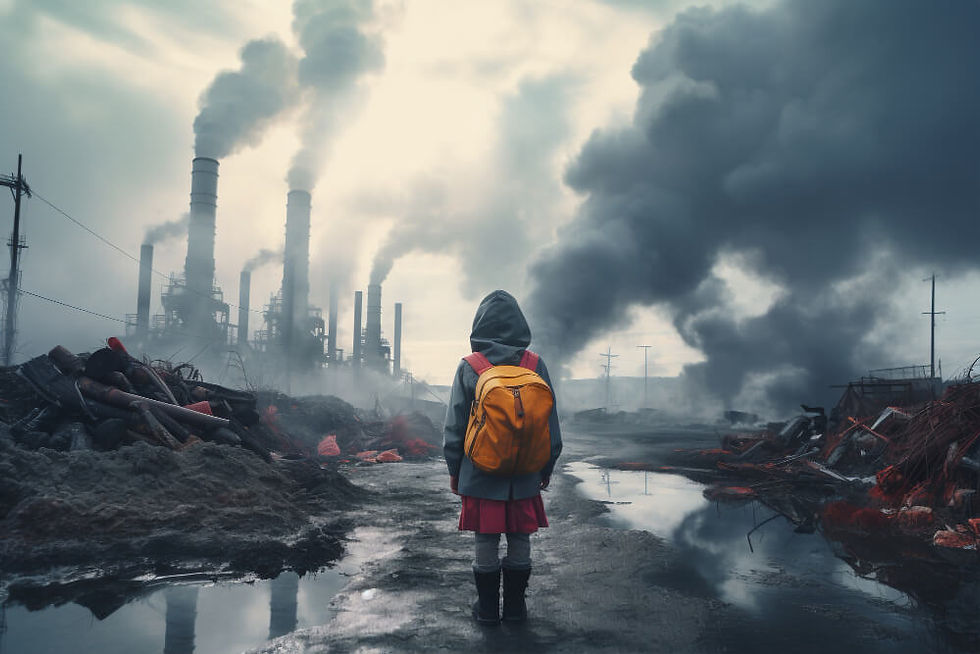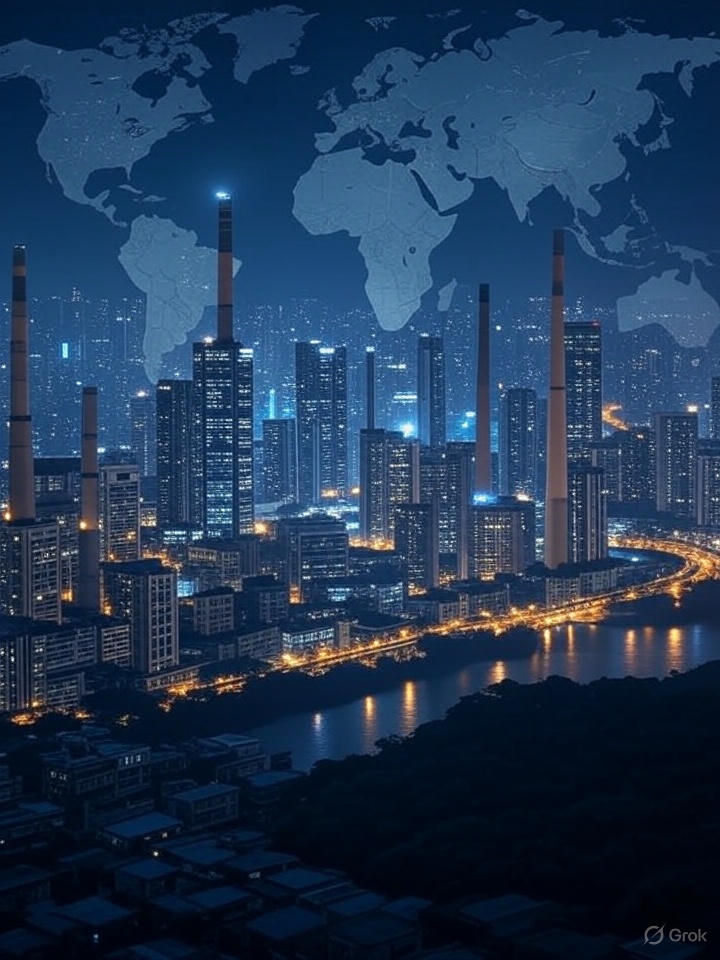Smog-to-Blue Skies: The Ruthless Efficiency That Cleaned Up China's Capital – And Why Many Are Still Choking
- thebrink2028
- Sep 15
- 3 min read

When P. Aiyar returned to Beijing after 16 years away, she expected the familiar haze that once shrouded the city like a perpetual fog machine. Instead, she found cerulean skies and visible horizons—proof that China's iron-fisted environmental crackdown actually worked.
This is like an overnight fairy tale. Beijing's transformation from one of the world's most polluted urban nightmares to a victory of blue skies unfolded over a decade of deliberate, often draconian measures. Back in the early 2010s, the city's air was a toxic stew: PM2.5 levels routinely spiked above 500 micrograms per cubic meter during winter "airpocalypse" episodes, far exceeding the safe limit of 5.
Official data from China's Ministry of Ecology and Environment confirms peak PM2.5 readings hit 993 in January 2013, with annual averages around 89. By 2023, those averages had plummeted to about 32—a 64% drop since 2013. No smoke and mirrors here; satellite imagery from NASA and ground sensors have given proof.
The recipe? A multi-pronged assault starting with the 2008 Olympics, when China mandated pollution controls on power plants but saw limited gains until regional coordination kicked in around 2013. Beijing teamed up with smog-spewing neighbors Tianjin and Hebei province to target the big three: industry, vehicles, and heating. Coal-fired brick kilns and steel mills—major culprits contributing 50-70% of Beijing's particulates from surrounding areas—were shuttered or upgraded. Vehicle emissions standards tightened, with odd-even license plate restrictions and a push toward electric vehicles; today, China dominates global EV production, with Beijing's fleet now over 50% new energy vehicles. Domestic heating shifted from raw coal to natural gas and cleaner alternatives, enforced through subsidies and penalties. Result: Not just clearer air, but a booming green tech sector—China now leads in solar panels, wind turbines, and abatement equipment, powering a July 2025 electricity consumption of 1.02 trillion kWh, outstripping Japan's yearly total, and with far less filth.
But here's what's unsaid in the feel-good narrative: This success hinged on China's authoritarian approach, where top-down decrees bypass the messy debates that hamstring other democracies. Xi Jinping's 2013 "war on pollution" wasn't optional; officials faced demotions or worse for missing targets, creating fierce incentives to deliver.
Local governments, once complicit in industrial favoritism for GDP growth, were reined in by central edicts—contradicting the decentralized chaos that lets polluters thrive elsewhere in China, like in coal-dependent provinces where PM2.5 remains stubbornly high. No mention of the human cost: Millions were displaced from factory jobs, rural migrants were hit the hardest, or the surveillance state monitoring compliance. It's efficient, sure, but at the expense of equity—speaking of how Beijing's Olympic clean-up in 2008 temporarily idled factories and bused out migrants, only for smog to rebound post-games.
Nothing "fake" in Aiyar's account—her observations align with verified trends. But the optimism glosses over diminishing returns: Post-2022, reductions have tapered as economic rebound strains gains, with coal still 60% of energy mix despite "cleaner" tech.
This reminds of historical patterns, like London's 1952 Great Smog—killing 4,000 in days—that spurred the 1956 Clean Air Act, banning coal in urban zones and slashing soot over decades. Or the U.S. in the 1970s, when choking cities birthed the EPA, forcing auto and factory reforms between public outrage. Beijing's story repeats the arc: Crisis sparks action, but only sustained political muscle turns the tide.
Looking ahead with TheBrink, expect Beijing to hold these gains through 2030, thanks to embedded tech like AI-monitored emissions and the 14th Five-Year Plan's net-zero push by 2060. With Xi's legacy tied to livability, backsliding risks unrest in a city of 22 million; economic incentives favor green exports over dirty growth. But global headwinds—trade wars, energy demands—could nibble at edges, especially if coal phases slower than pledged.
As of September 2025, megacities worldwide—from Delhi's annual smog sieges (PM2.5 averages 90+, per IQAir) to toxic winters—face the same chokehold, linked to 7 million premature deaths yearly.
Urban planners, policymakers, and everyday breathers should watch: Beijing proves rapid reversal is possible, but democracies like India need cross-state pacts and enforcement teeth, not just plans.
Livable cities or ghost towns of health crises.
Will other smog capitals summon the will—or watch their skies gray forever?
Send tips on pollution fixes or similar tales to thebrink2028@gmail.com .


